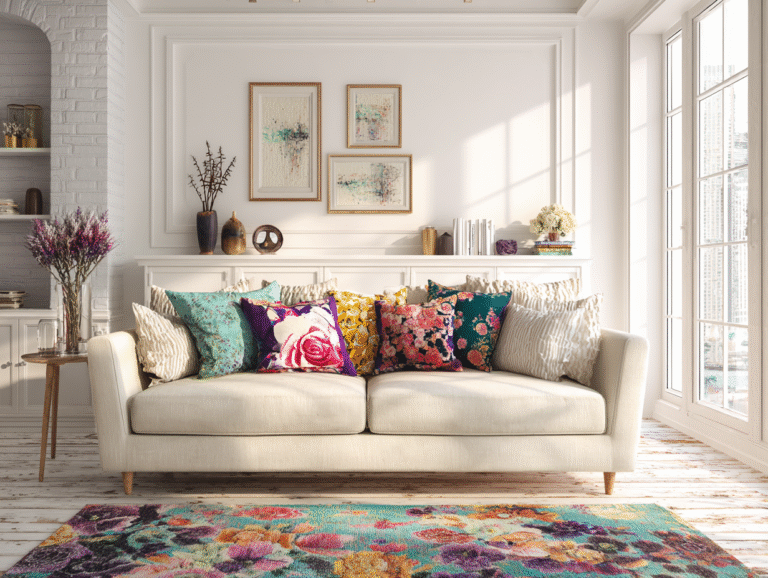Buying your first home is a moment loaded with excitement and anticipation. Yet, when you walk through the front door, it’s easy for enthusiasm to spill over into your decorating choices, especially when it comes to furniture. Whether you’re like me and have moved into a new space recently, or you’re getting ready to, here are some ways to avoid the dreaded furniture overload that can quickly turn your dream home into a cluttered nightmare.
Embrace the Space
When I first moved into my apartment, my mind raced with possibilities, imagining wall-to-wall decor. Then reality set in, realizing my space was limited, and too much furniture could shrink it visually. I suggest paying careful attention to your floor plan before buying. Understanding the exact dimensions of your rooms is imperative to avoid buying oversized pieces or items you won’t have space to fit.
One approach that worked wonders for me was sketching out various layout options on graph paper before making any major purchases. This allowed me to envision different setups and experiment with various configurations without physically rearranging heavy items. It provided clarity on how each piece would fit and function within my available space.
Adapting to new environments also means redefining traditional room functions. What may have been a dining room in one home could double as a home office or craft area in another. By embracing this flexibility, you can make the most of each area, tailoring spaces to meet your evolving needs without adding unnecessary furnishings. With a bit of planning, you can create multifunctional zones that adapt to your lifestyle.
Prioritize Functionality
Initially, it was tempting to buy pieces purely for aesthetic value. A chic armchair or ornate sideboard might seem necessary at first, but does it actually serve a purpose? I learned to put functionality first. Please make a list of the absolute essentials—like a bed, sofa, and dining table—before considering style or luxury purchases.
Defining the true purpose of each room was instrumental in honing in on function. For instance, understanding my living room as both a relaxation hub and part-time office led to investing in a sofa that doubled as cozy seating and a computer nook. This pragmatic approach ensured that every piece was not only beautiful but also practical and intentional.
During this process, I also realized the importance of sustainable living. Instead of discarding unused furniture, consider checking out old furniture removal options that allow for recycling or repurposing items.
Think Multipurpose

Sometimes less truly is more, and this couldn’t be truer when considering multipurpose furniture. I discovered that a sofa bed was a lifesaver, not only in saving space but also in making overnight guests comfortable. Look for items like modular shelves, which can double as a media stand, or a console table with storage. They maximize space without crowding it.
Avoid Emotional Spending
It’s easy to get caught up in the excitement of decorating, making impulse purchases that you might later regret. I remember falling in love with an intricate coffee table only to find out it didn’t fit with my minimalist style. Take your time. Sleep on major purchases, and think through the utility each piece will provide in your day-to-day life.
Practice Restraint

The urge to fill empty corners with charming bookshelves or artsy objects can be hard to resist. However, it’s important to let each piece breathe and stand out. I fell into the trap of over-accessorizing, adding too many throw pillows or trinkets. Now, I curate decor items thoughtfully, rotating them in and out so that each one has its moment without overwhelming the room.
Be Patient
Furnishing a home doesn’t have to happen overnight. On the brink of buying multiple pieces within the first month, I eventually realized that patience allows you to find pieces that truly resonate with your style and needs. Gradually layering your space with thoughtful choices can result in a more personalized and cohesive environment.
One unexpected benefit of patience was discovering unique secondhand treasures at local thrift stores and flea markets. By not rushing the process, I was able to integrate vintage finds that became conversation pieces, adding character and stories to my home.
Conclusion
Overloading your home with furniture isn’t just a case of aesthetic choice; it can affect how you feel in your space. Your first home should be a reflection of your personal taste while staying functional and uncluttered. With thoughtful planning and restraint, it’s possible to have a beautiful, efficient home. Remember, when it comes to furniture, think quality over quantity. Your space, and sanity, will thank you.
0
Related
Read the full article here


